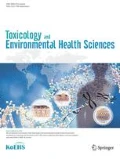Abstract
The present study was performed to evaluate the laxative effects of fermented rice extract (FRe) in normal rats. FRe was orally administered at doses of 100, 200, and 300 mg/kg once per day for 15 days, and the changes in fecal parameters (fecal pellet numbers, weights, and water contents), gastrointestinal transit ratio, fecal mucus contents, colonic mucus-producing cell numbers, and mean colonic mucosa thicknesses were examined in normal rats. The laxative effects of FRe were compared with those of sodium picosulfate. At the three doses administered, FRe treatment resulted in marked increases in fecal pellet numbers and water contents discharged over 24 h, surface mucus thickness in the colonic lumen, intestinal charcoal-transit ratio, and in thickness and mucus-producing goblet cell number of the colonic mucosa with decreases in fecal pellet numbers and mean diameters remaining in the colonic lumen in comparison to the vehicle control. With the exception of intestinal charcoal-transit ratio, the effects of FRe were less marked than those of sodium picosulfate. The results of this study suggest that FRe has a laxative effect without causing diarrhea, as compared with sodium picosulfate, and FRe may be highly effective as a complementary medicine in humans suffering from lifestyle-induced constipation.
Similar content being viewed by others
References
Kakino, M. et al. Laxative effects of agarwood on low-fiber diet-induced constipation in rats. BMC Complement. Altern. Med. 10, 68 (2010).
Mostafa, S. M., Bhandari, S., Ritchie, G., Gratton, N. & Wenstone, R. Constipation and its implications in the critically ill patient. Br. J. Anaesth. 91, 815–819 (2003).
Jones, R. & Lydeard, S. Irritable bowel syndrome in the general population. BMJ 304, 87–90 (1992).
Talley, N. J. et al. Functional gastroduodenal disorders. Gut 45, 1137–1142 (1999).
Siegers, C. P., von Hertzberg-Lottin, E., Otte, M. & Schneider, B. Anthranoid laxative abuse-a risk for colorectal cancer? Gut 34, 1099–1101 (1993).
Cho, Y. E. et al. Red yeast rice stimulates osteoblast proliferation and increases alkaline phosphatase activity in MC3T3-E1 cells. Nutr. Res. 30, 501–510 (2010).
Lu, H. E. et al. Hypoglycaemic effects of fermented mycelium of Paecilomyces farinosus (G30801) on high-fat fed rats with streptozotocin-induced diabetes. Indian J. Med. Res. 131, 696–701 (2010).
Ho, B. Y. et al. Effects of Monascus-fermented rice extract on malignant cell-associated neovascularization and intravasation determined using the chicken embryo chorioallantoic membrane model. Integr. Cancer Ther. 9, 204–212 (2010).
Lee, C. L., Kuo, T. F., Wu, C. L., Wang, J. J. & Pan, T. M. Red mold rice promotes neuroprotective sAPPalpha secretion instead of Alzheimer’s risk factors and amyloid beta expression in hyperlipidemic Abeta40- infused rats. J. Agric. Food Chem. 58, 2230–2238 (2010).
Setnikar, I., Senin, P. & Rovati, L. C. Antiatherosclerotic efficacy of policosanol, red yeast rice extract and astaxanthin in the rabbit. Arzneimittelforschung 55, 312–317 (2005).
Kim, K. M., Yu, K. W., Kang, D. H. & Suh, H. J. Antistress and anti-fatigue effect of fermented rice bran. Phytother. Res. 16, 700–702 (2002).
Lee, J. K. et al. The growth-stimulating effects of fermented rice extract (FRe) on lactic acid bacteria and Bifidobacterium spp. Food Sci. Technol. Res. in press.
Forth, W., Nell, G., Rummel, W. & Andres, H. The hydrogogue and laxative effect of the sulfuric acid ester and the freediphenol of 4,4′-dihydroxydiphenyl-(pyridyl-20-Methane). Naunyn Schmiedebergs. Arch. Pharmacol. 274, 46–53 (1972).
Jauch, R., Hankwitz, R., Beschke, K. & Pelzer, H. Bis-(p-hydroxyphenyl)-pyridyl-2-methane: the common laxative principle of bisacodyl and sodium picosulphate. Arzneimittelforschung 25, 1796–1800 (1975).
Méité, S. et al. Laxative activities of Mareya micrantha (Benth.) Müll. Arg. (Euphorbiaceae) leaf aqueous extract in rats. BMC Complement. Altern. Med. 10, 7 (2010).
Ashafa, A. O. T., Sunmonu, T. O., Abass, A. A. & Ogabe, A. A. Laxative potential of the ethanolic leaf extract of Aloe vera (L.) Burm. f. in Wistar rats with loperamide-induced constipation. J. Nat. Pharm. 2, 158–162 (2011).
Wintola, O. A., Sunmonu, T. O. & Afolayan, A. J. The effect of Aloe ferox Mill. in the treatment of loperamide-induced constipation in Wistar rats. BMC Gastroenterol. 10, 95 (2010).
Wu, D. et al. Traditional Chinese formula, lubricating gut pill, stimulates cAMP-dependent Cl (−) secretion across rat distal colonic mucosa. J. Ethnopharmacol. 134, 406–413 (2011).
Yang, Z. H. et al. Cellular mechanisms underlying the laxative effect of flavonol naringenin on rat constipation model. PLoS One. 3, e3348 (2008).
Sagar, L., Sehgal, R. & Ojha, S. Evaluation of antimotility effect of Lantana camara L. var. acuelata constituents on neostigmine induced gastrointestinal transit in mice. BMC Complement. Altern. Med. 5, 18 (2005).
McCullogh, J. S., Ratcliffe, B., Mandir, N., Carr, K. E. & Goodlad, R. A. Dietary fibre and intestinal microflora: effects on intestinal morphometry and crypt branching. Gut 42, 799–806 (1998).
Isawa, K. et al. Isolation and Identification of a New Bifidogenic Growth Stimulator Produce by Propionibacterium freudenreichii ET-3. Biosci. Biotechnol. Biochem. 66, 679–681 (2002).
Mäkeläinen, H., Hasselwander, O., Rautonen, N. & Ouwehand, A. C. Panose, a new prebiotic candidate. Lett. Appl. Microbiol. 49, 666–672 (2009).
Hojo, K. et al. Effect of Ingested Culture of Propionibacterium freudenreichii ET-3 on Fecal Microflora and Stool Frequency in Healthy Females. Biosci. Microflora. 21, 115–120 (2002).
Uchida, M., Mogami, O. & Matsueda, K. Characteristic of milk whey culture with Propionibacterium freudenreichii ET-3 and its application to the inflammatory bowel disease therapy. Inflammopharmacol. 15, 105–108 (2007).
Author information
Authors and Affiliations
Corresponding authors
Additional information
These authors contributed equally to this work.
Rights and permissions
About this article
Cite this article
Choi, JS., Kim, JW., Cho, HR. et al. Laxative effects of fermented rice extract (FRe) in normal rats. Toxicol. Environ. Health Sci. 6, 155–163 (2014). https://doi.org/10.1007/s13530-014-0200-2
Received:
Revised:
Accepted:
Published:
Issue Date:
DOI: https://doi.org/10.1007/s13530-014-0200-2




